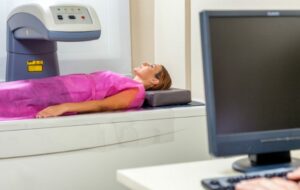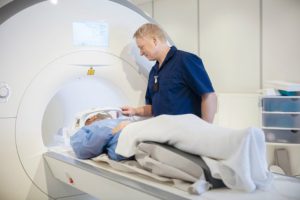Reducing Radiation Doses in Radiology
Concerns linked to health and environment have been on the rise in modern countries. Statistically we are living longer; however our longevity is often suffering.

Reducing Radiation Doses in Radiology
Concerns linked to health and environment have been on the rise in modern countries. Statistically we are living longer; however our longevity is often suffering. The quality of food, to supply the enormous world population, has diminished as well as the availability to potable water. However, in light of what we face environmentally, the medical field is attaining new heights in understanding how to effectively reduce radiation doses in radiology. After thorough study radiology practitioners can now most often apply minimal exposure, while still being able to accurately diagnose and pin point serious abnormalities in patients’ bodies.
Before and After: Advances in Radiology
Just over a hundred years ago Wilhelm Conrad Röntgen initially, and accidentally, invented the X-ray. Recent research showed the equipment Röntgen used generated about 1,500 times more radiation compared to today’s modern medical equipment. Not to mention the time was sliced down from 90 minutes to mere milliseconds to receive an image. It’s astounding to realise how quickly radiation based equipment has developed. They have been transformed into one of the most important lifesaving diagnostic tools used by highly trained medical teams throughout the world.
Radiation in our World
There are small amounts of radiation all around us every day. It may surprise some to know our mobile phones generate low amounts of radiation. In countries like Sweden, it is required by law to inform the customers about how much is emitted in each mobile. Radiation is a concern for the younger generation because of their spongy like systems, which absorb more than adult bodies do.
Aside from Radiation being in TVs, mobile phones and airport body scanners, radiation based medical equipment should be used only when deemed completely necessary for diagnosing a patient’s problem. The higher the amount of radiation used for diagnosis, the clearer the image.
Medical Experts are now doing their best to lower the doses to a minimum while still achieving sound results. This can only accomplished thanks to the expertise of well-trained radiologists. Hospitals and outpatient facilities greatly owe the increase in lives saved and improved to these advances in technology.
Understanding the Procedure
The preliminary visits to the doctor most often will heal or help an ailment, however if everything previously attempted doesn’t improve symptoms your doctor may recommend a CT scan. A CT (computer tomography) scan takes several cross section high resolution images and brings them together to show a specific region of the body.
They are great at detecting tumors, internal bleeding, heart defects, and much more. It’s pain free procedure that can be performed quickly that can be pertinent to your health. Just remember to ask questions from your doctor or radiologist if you feel concerned about the procedure and they will be able to break down the steps of the scan so that you feel comfortable. Remember to wear comfortable clothes and having a companion will help ease the tension as well.
The main challenge for doctors is using the least amount of radiation possible without compromising the entire result. Compared to the last thirty years, the levels of radiation exposed to patients has dramatically decreased, and therefore increasing patient’s long term health. It’s important to understand the risks and benefits in order to make an informed decision. The future of radiation base equipment is looking bright.
There is a law in Australia named the Radiation ACT, where all radiation use is managed by a provision for licensed users only. These acts and laws give the medical community a leg up in understanding how to avoid unnecessary exposure to patients. Doctors are all looking for the best interest and health of their patients, so listening to their concern and suggestions would behoove anyone.
Vision XRAY Group uses low dose technology at its practices and takes all possible precautions for all procedures using X-rays to minimize radiation dose.
Read our articles and FAQs
We’re delighted to provide updates on the latest medical imaging technology and answer your most frequently asked questions about our services.









